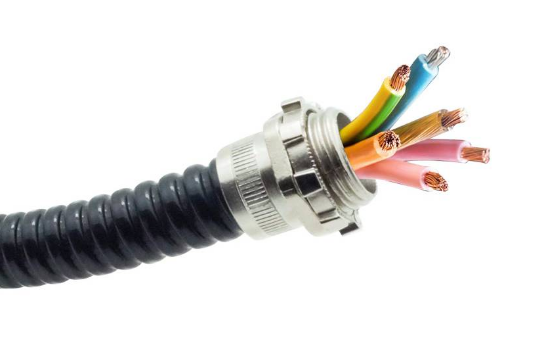Mar. 15, 2024
Understanding Flexible Metal Conduit
In the realm of pipe fittings, it's not uncommon for laymen to confuse different products, particularly when it comes to flexible metal conduit and metal network management. Both serve crucial roles in protecting transmission signal lines, wires, and cables, but they have distinct differences that are important to understand before making a choice.
Flexible Metal Conduit
Flexible metal conduit, which encompasses both threaded and corrugated metal conduit, is primarily designed to safeguard transmission signal lines, wires, cables, and fiber optic cables. In civilian applications, it's often utilized for bathing hoses, kitchen sink hoses, and in industrial settings like factory workshops to shield cables and wires from external damage. These conduits typically boast characteristics such as waterproofing, insulation, fire resistance, and tensile strength, along with excellent bending flexibility. Quality requirements for these hoses are stringent, particularly in industries like petrochemicals, steam, and gas, where they serve critical functions in daily operations.

Key Factors in Flexible Metal Conduit Selection
When choosing flexible metal conduit, several factors come into play. Firstly, the diameter and length of the conduit are crucial considerations. Additionally, the working pressure, expressed in pressure units, determines its suitability for specific applications. Material selection is paramount, as different materials offer varying degrees of corrosion resistance, which directly impacts durability. Finally, the conduit's usage state, including movement states and minimum bend radius, must be assessed to ensure proper installation and functionality.
Metal Network Management
Metal network management, often referred to as metal braided tubing, consists of multiple layers of inner tubes, each with a distinct structure. Typically, the inner layer comprises a rubber tube with an insulating layer in between. This type of tubing is commonly employed in sprinkler pipe fittings.
Difference Between Metal Network Management and Flexible Metal Conduit
While both flexible metal conduit and metal network management serve protective functions, they differ significantly in characteristics and applications. Flexible metal conduit, favored for its sealing capabilities and bend flexibility, is commonly used in infrastructure laying projects and industrial applications. It offers better sealing but may be susceptible to breakage. On the other hand, metal network management boasts superior toughness, strength, and tensile resistance, making it ideal for household applications where durability is key. However, its tightness may be lower compared to flexible metal conduit, potentially resulting in leaks.
Choosing the Right Solution
When deciding between flexible metal conduit and metal network management, it's essential to assess the specific requirements of your application. If tightness is paramount, flexible metal conduit may be the preferred choice. However, for applications requiring superior toughness and durability, metal network management may be more suitable. Ultimately, the decision should align with your project's needs and objectives.
In conclusion, understanding the differences between flexible metal conduit and metal network management is crucial for making informed decisions in pipe fitting applications. Whether you require the sealing capabilities of flexible metal conduit or the toughness of metal network management, selecting the right solution ensures optimal performance and reliability.
For inquiries about flexible metal conduit and metal network management suppliers or further information on pipe fittings, please don't hesitate to contact us.

















